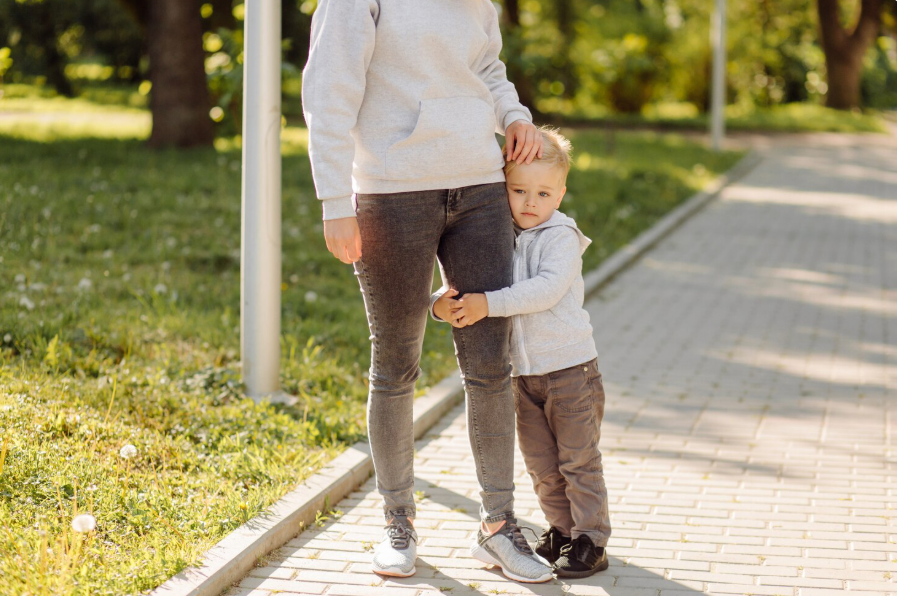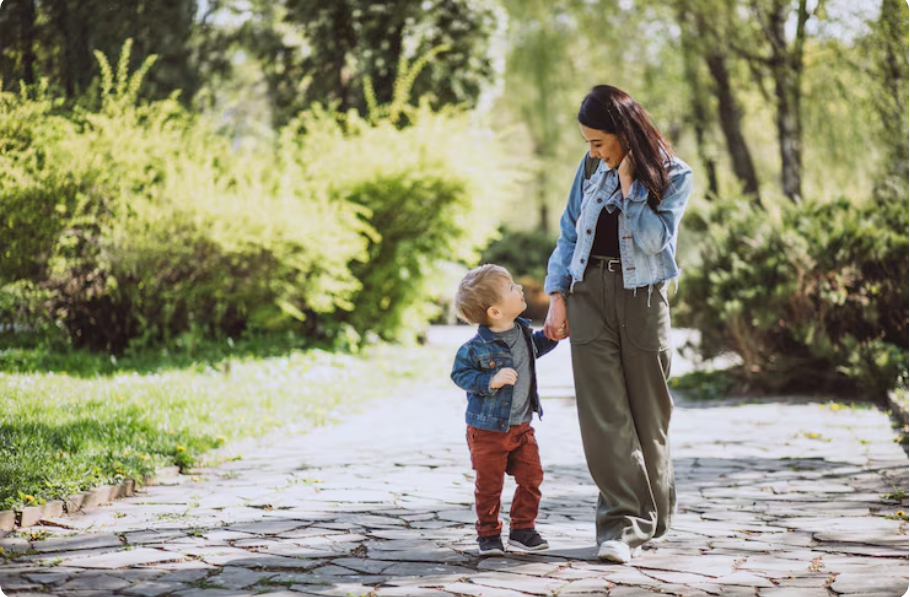Blog
Smart and Simple Baby Walking Safety Tips for Parents

Watching your baby take their first steps is an unforgettable milestone filled with excitement and pride. However, as thrilling as it is, this phase also brings new safety concerns. Once a baby starts walking, their mobility increases drastically, and so do the risks of falls, injuries, and accidents. Ensuring their safety during this development stage is crucial for their well-being. This guide provides over 2,000 words of practical, user-friendly baby walking safety tips that every parent or caregiver should know.
Start With a Safe Walking Environment
Before your baby even takes a step, creating a safe walking space is essential. Babies are naturally curious and will attempt to walk in every direction once they’re up and moving. To avoid hazards, remove all obstacles such as unstable furniture, cords, open outlets, or sharp objects. Use baby gates to limit access to risky areas like staircases, kitchens, and balconies. Always keep floors clean and dry to prevent slipping accidents. Think of the floor from a baby’s perspective—anything they can reach, touch, or bump into should be considered for removal or padding.
Choose the Right Footwear or Go Barefoot Indoors
The right footwear can impact a baby’s walking development and safety. Contrary to popular belief, barefoot walking is best indoors, especially on clean, non-slippery surfaces. Barefoot allows better grip, strengthens foot muscles, and helps improve balance. If shoes are necessary—for outdoor use—opt for soft, flexible, non-slip shoes that mimic the natural shape of a baby’s foot. Avoid stiff or heavy footwear as it may interfere with their walking pattern.
Use Non-Slip Socks on Slippery Floors
If you’re in a home with hardwood, tile, or laminate flooring, non-slip socks can help prevent your baby from sliding and falling. These socks come with rubber grips on the sole, which provides traction and reduces the chances of injuries due to slipping. Avoid smooth, silky socks as they can be hazardous on polished surfaces. Also, check the socks regularly for wear and tear, and replace them when the grip begins to fade.
Supervise Constantly but Encourage Independence
Supervision is essential when a baby is learning to walk, but hovering constantly can inhibit their confidence. Instead of holding their hands all the time, let them walk on their own in a safe environment while keeping a close watch. This builds trust, balance, and self-reliance. Of course, always remain within arm’s reach in case they lose balance or wander toward danger. Avoid distractions like phones when supervising walking babies.
Keep Hazardous Items Out of Reach
Once your baby begins walking, nothing is off-limits in their mind. This means drawers, cabinets, and tables become new attractions. Be sure to move items like scissors, medications, small objects, plastic bags, hot drinks, and detergents out of reach. Use cabinet locks, safety latches, and corner guards to baby-proof accessible areas. Always scan the room for potential threats from a baby’s height level. If something seems tempting or dangerous—it probably is.
Install Safety Gates at Stairs and Unsafe Rooms
Stairs are one of the most dangerous places for walking babies. Safety gates should be installed at the top and bottom of all staircases. Choose pressure-mounted gates for bottom stairs and hardware-mounted ones for top stairs for maximum security. Also, use gates to block access to bathrooms, kitchens, and laundry rooms—places filled with hidden risks like water, chemicals, and hot surfaces. Never rely on a baby’s memory or training alone—physical barriers are more effective.
Avoid the Use of Baby Walkers
Although traditional baby walkers were once popular, most pediatricians now strongly advise against them. Walkers allow babies to move quickly without developing the necessary muscles for balance and proper walking posture. Even more concerning, walkers increase the risk of serious accidents like falling down stairs, tipping over, or reaching dangerous objects. Instead, use stationary activity centers or supervised floor play to support natural walking development.
Use a Stable and Safe Push Toy
Push toys can be beneficial when chosen carefully. They offer support and encourage babies to take steps while building balance. However, not all push toys are created equal. Avoid lightweight or unstable toys that tip over easily. Instead, choose weighted, wide-based push toys with sturdy handles and large wheels. Always supervise push toy play and ensure it’s used on flat, safe surfaces. Never use push toys near stairs, pools, or patios.
Provide Lots of Tummy and Floor Time Before Walking
Walking doesn’t start when the baby stands—it begins with crawling, scooting, and rolling. Floor time strengthens the back, neck, and leg muscles needed for walking. Encourage tummy time daily during infancy, and continue to let your baby explore their surroundings on all fours before walking. This helps with coordination, spatial awareness, and gross motor skills. Avoid prolonged time in playpens, swings, or carriers that restrict movement.
Watch Out for Uneven Surfaces
Once a baby starts walking, they’ll explore every surface—rugs, mats, stairs, or thresholds. Uneven or loose surfaces pose a tripping hazard. Secure rugs with non-slip pads or double-sided tape. Avoid letting babies walk on unstable outdoor surfaces like gravel or sand unless supervised closely. Indoors, eliminate small mats or floor transitions that could make them stumble. Babyproofing doesn’t stop at electrical outlets; it includes flooring too.
Use Furniture Anchors and Wall Straps
New walkers tend to use furniture to steady themselves. If the furniture isn’t secure, it could tip over. Use furniture anchors or wall straps to secure bookshelves, TV stands, dressers, and even heavy lamps. Never place items like toys or remotes on top of furniture to encourage climbing. Keep the lower drawers and surfaces free of tempting objects. Teach your child early not to pull or lean on furniture for climbing.
Teach the Word “Stop” and Practice It Early
Safety isn’t just about gadgets—it’s also about communication. As babies begin walking, start teaching them simple safety words like “Stop” or “No.” Practice using these commands during everyday activities. For instance, when they head toward a doorway or the street, use a firm voice and gesture to reinforce the command. This early verbal training can be a life-saving tool as they grow and explore.
Avoid Slippery or Wet Areas
Babies don’t yet understand the danger of slippery surfaces. Keep bathrooms dry and mop up any spills quickly in kitchens or living rooms. Avoid letting them walk around pools, tubs, or garden sprinklers unless they are barefoot and under supervision. Anti-slip bathroom mats and absorbent rugs are excellent for minimizing falls. Never underestimate how fast a baby can get hurt on a damp floor.
Keep Pets Away During Walking Practice
Pets can unintentionally knock over or trip a baby who is still mastering balance. While the bond between a child and pet is precious, it’s best to keep pets in another room during walking practice. Even a gentle nudge from a dog or cat can lead to a tumble. Once your baby becomes more stable on their feet, reintroduce pet interactions slowly, with careful observation.
Be Cautious With Outdoor Walks
Taking babies outdoors is wonderful, but walking outside comes with unique dangers. Sidewalk cracks, curbs, strangers, vehicles, and animals can all pose threats. Always use a harness or hold their hand during outdoor walks. Avoid high-traffic areas or uneven terrain. Make sure they wear protective clothing and sun hats. Choose parks and playgrounds with toddler-safe zones for beginner walkers.
Set a Good Example by Practicing Safe Habits
Babies are visual learners. They watch and imitate what adults do. Demonstrate safety behaviors like stepping carefully over objects, using railings, and avoiding slippery areas. Keep your own walking pace slow and controlled when you’re with them. This modeling teaches them how to move through spaces safely and confidently. It’s not just about telling them—it’s about showing them, too.
Avoid Carrying Hot Items While Walking Near Baby
Burns are one of the most serious injuries for toddlers. When your baby starts walking, they’re often at the same level as hot mugs or pans. Avoid carrying tea, coffee, or hot food near them. Keep hot items out of reach and away from table edges. Invest in insulated cups with lids and rotate pot handles away from the edge of the stove. Your baby’s safety depends on how you manage your surroundings.
Gradually Introduce New Spaces
Let your baby master one space before introducing them to new ones. Instead of letting them roam the entire house immediately, allow walking in one safe room. Once they’re comfortable and balanced, gradually open access to other rooms. This helps them gain confidence without being overwhelmed and reduces the risk of them wandering into unsafe areas. It’s better to go slow and safe than fast and risky.
Be Patient and Celebrate Progress

Every baby walks at their own pace. Some may walk at nine months, others closer to eighteen months. Avoid pushing them to walk early or comparing them with other children. Celebrate each step—literally—and provide encouragement. Clap, smile, and offer praise to build their confidence. Positive reinforcement motivates them to keep trying while ensuring they associate walking with fun and safety.
Create a Baby-Friendly Routine
Consistency helps a baby thrive, especially when learning physical milestones like walking. Develop a daily routine that includes supervised walking time, safe play, and periods of rest. Overstimulation or tiredness can lead to more falls. A well-rested baby is more coordinated and alert. Keep walking sessions short at first, and gradually increase time as their strength builds.
Have Emergency Supplies Ready
Even with the best precautions, accidents can happen. Keep a baby-safe first aid kit in an accessible place. Stock it with items like adhesive bandages, antiseptic wipes, digital thermometer, baby pain reliever (consult doctor), and sterile gauze. Learn basic first aid procedures such as how to treat minor falls or cuts. Being prepared adds another layer of safety and peace of mind.
Conclusion
A baby’s first steps open the door to an exciting world, but they also introduce new risks that demand careful preparation. By creating a safe environment, choosing appropriate footwear, supervising wisely, and implementing practical safety habits, you can ensure your little one walks confidently and securely. Safety doesn’t mean restriction—it means giving your baby the freedom to explore within a space where they’re protected. Remember, each stumble is a step toward mastering balance. Your role is to keep the journey safe, loving, and full of encouragement.
-

 Tech1 year ago
Tech1 year agoHow to Use a Temporary Number for WhatsApp
-

 Business2 years ago
Business2 years agoSepatuindonesia.com | Best Online Store in Indonesia
-

 Social Media1 year ago
Social Media1 year agoThe Best Methods to Download TikTok Videos Using SnapTik
-

 Technology1 year ago
Technology1 year agoTop High Paying Affiliate Programs
-

 Tech8 months ago
Tech8 months agoUnderstanding thejavasea.me Leaks Aio-TLP: A Comprehensive Guide
-

 FOOD10 months ago
FOOD10 months agoHow to Identify Pure Desi Ghee? Ultimate Guidelines for Purchasing Authentic Ghee Online
-

 Instagram3 years ago
Instagram3 years agoFree Instagram Auto Follower Without Login
-

 Instagram3 years ago
Instagram3 years agoFree Instagram Follower Without Login


















